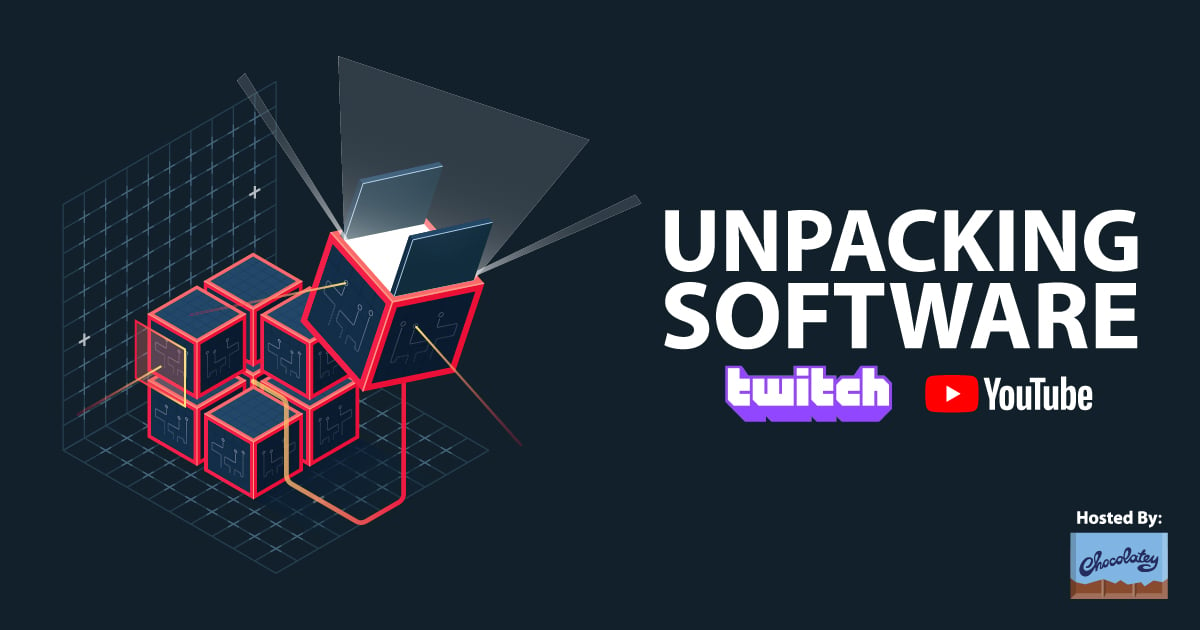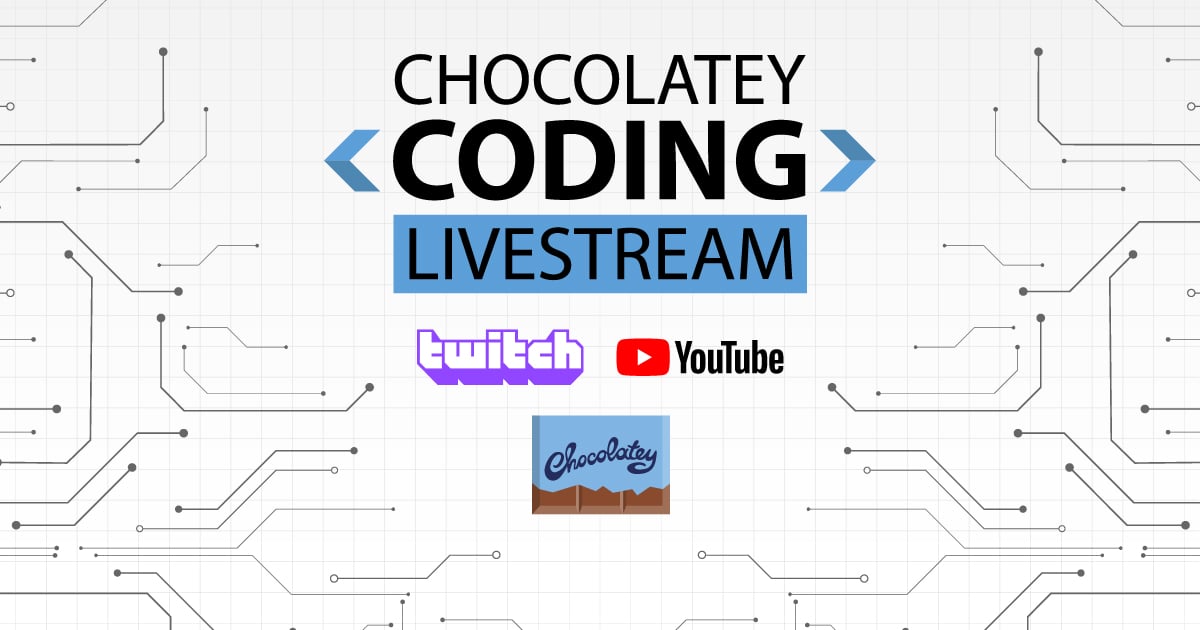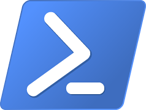
Downloads:
89,691
Downloads of v 2.0.36:
78,561
Last Update:
27 Mar 2022
Package Maintainer(s):
Software Author(s):
- Securepoint Security Solutions
Tags:
- Software Specific:
- Software Site
- Software Source
- Software License
- Software Docs
- Software Issues
- Package Specific:
- Package Source
- Package outdated?
- Package broken?
- Contact Maintainers
- Contact Site Admins
- Software Vendor?
- Report Abuse
- Download
Securepoint SSL VPN Client
- 1
- 2
- 3
2.0.36 | Updated: 27 Mar 2022
- Software Specific:
- Software Site
- Software Source
- Software License
- Software Docs
- Software Issues
- Package Specific:
- Package Source
- Package outdated?
- Package broken?
- Contact Maintainers
- Contact Site Admins
- Software Vendor?
- Report Abuse
- Download
Downloads:
89,691
Downloads of v 2.0.36:
78,561
Maintainer(s):
Software Author(s):
- Securepoint Security Solutions
Securepoint SSL VPN Client 2.0.36
Legal Disclaimer: Neither this package nor Chocolatey Software, Inc. are affiliated with or endorsed by Securepoint Security Solutions. The inclusion of Securepoint Security Solutions trademark(s), if any, upon this webpage is solely to identify Securepoint Security Solutions goods or services and not for commercial purposes.
- 1
- 2
- 3
All Checks are Passing
3 Passing Tests
Deployment Method: Individual Install, Upgrade, & Uninstall
To install Securepoint SSL VPN Client, run the following command from the command line or from PowerShell:
To upgrade Securepoint SSL VPN Client, run the following command from the command line or from PowerShell:
To uninstall Securepoint SSL VPN Client, run the following command from the command line or from PowerShell:
Deployment Method:
This applies to both open source and commercial editions of Chocolatey.
1. Enter Your Internal Repository Url
(this should look similar to https://community.chocolatey.org/api/v2/)
2. Setup Your Environment
1. Ensure you are set for organizational deployment
Please see the organizational deployment guide
2. Get the package into your environment
Option 1: Cached Package (Unreliable, Requires Internet - Same As Community)-
Open Source or Commercial:
- Proxy Repository - Create a proxy nuget repository on Nexus, Artifactory Pro, or a proxy Chocolatey repository on ProGet. Point your upstream to https://community.chocolatey.org/api/v2/. Packages cache on first access automatically. Make sure your choco clients are using your proxy repository as a source and NOT the default community repository. See source command for more information.
- You can also just download the package and push it to a repository Download
-
Open Source
-
Download the package:
Download - Follow manual internalization instructions
-
-
Package Internalizer (C4B)
-
Run: (additional options)
choco download securepointsslvpn --internalize --source=https://community.chocolatey.org/api/v2/ -
For package and dependencies run:
choco push --source="'INTERNAL REPO URL'" - Automate package internalization
-
Run: (additional options)
3. Copy Your Script
choco upgrade securepointsslvpn -y --source="'INTERNAL REPO URL'" [other options]See options you can pass to upgrade.
See best practices for scripting.
Add this to a PowerShell script or use a Batch script with tools and in places where you are calling directly to Chocolatey. If you are integrating, keep in mind enhanced exit codes.
If you do use a PowerShell script, use the following to ensure bad exit codes are shown as failures:
choco upgrade securepointsslvpn -y --source="'INTERNAL REPO URL'"
$exitCode = $LASTEXITCODE
Write-Verbose "Exit code was $exitCode"
$validExitCodes = @(0, 1605, 1614, 1641, 3010)
if ($validExitCodes -contains $exitCode) {
Exit 0
}
Exit $exitCode
- name: Install securepointsslvpn
win_chocolatey:
name: securepointsslvpn
version: '2.0.36'
source: INTERNAL REPO URL
state: present
See docs at https://docs.ansible.com/ansible/latest/modules/win_chocolatey_module.html.
chocolatey_package 'securepointsslvpn' do
action :install
source 'INTERNAL REPO URL'
version '2.0.36'
end
See docs at https://docs.chef.io/resource_chocolatey_package.html.
cChocoPackageInstaller securepointsslvpn
{
Name = "securepointsslvpn"
Version = "2.0.36"
Source = "INTERNAL REPO URL"
}
Requires cChoco DSC Resource. See docs at https://github.com/chocolatey/cChoco.
package { 'securepointsslvpn':
ensure => '2.0.36',
provider => 'chocolatey',
source => 'INTERNAL REPO URL',
}
Requires Puppet Chocolatey Provider module. See docs at https://forge.puppet.com/puppetlabs/chocolatey.
4. If applicable - Chocolatey configuration/installation
See infrastructure management matrix for Chocolatey configuration elements and examples.
This package was approved as a trusted package on 27 Mar 2022.
This repository contains the sources of the package Securepoint SSL VPN for Chocolatey, the package manager for Windows.
For more information, please refer to the instructions available in the parent repository.
GNU GENERAL PUBLIC LICENSE
Version 2, June 1991
Copyright (C) 1989, 1991 Free Software Foundation, Inc.,
51 Franklin Street, Fifth Floor, Boston, MA 02110-1301 USA
Everyone is permitted to copy and distribute verbatim copies
of this license document, but changing it is not allowed.
Preamble
The licenses for most software are designed to take away your
freedom to share and change it. By contrast, the GNU General Public
License is intended to guarantee your freedom to share and change free
software--to make sure the software is free for all its users. This
General Public License applies to most of the Free Software
Foundation's software and to any other program whose authors commit to
using it. (Some other Free Software Foundation software is covered by
the GNU Lesser General Public License instead.) You can apply it to
your programs, too.
When we speak of free software, we are referring to freedom, not
price. Our General Public Licenses are designed to make sure that you
have the freedom to distribute copies of free software (and charge for
this service if you wish), that you receive source code or can get it
if you want it, that you can change the software or use pieces of it
in new free programs; and that you know you can do these things.
To protect your rights, we need to make restrictions that forbid
anyone to deny you these rights or to ask you to surrender the rights.
These restrictions translate to certain responsibilities for you if you
distribute copies of the software, or if you modify it.
For example, if you distribute copies of such a program, whether
gratis or for a fee, you must give the recipients all the rights that
you have. You must make sure that they, too, receive or can get the
source code. And you must show them these terms so they know their
rights.
We protect your rights with two steps: (1) copyright the software, and
(2) offer you this license which gives you legal permission to copy,
distribute and/or modify the software.
Also, for each author's protection and ours, we want to make certain
that everyone understands that there is no warranty for this free
software. If the software is modified by someone else and passed on, we
want its recipients to know that what they have is not the original, so
that any problems introduced by others will not reflect on the original
authors' reputations.
Finally, any free program is threatened constantly by software
patents. We wish to avoid the danger that redistributors of a free
program will individually obtain patent licenses, in effect making the
program proprietary. To prevent this, we have made it clear that any
patent must be licensed for everyone's free use or not licensed at all.
The precise terms and conditions for copying, distribution and
modification follow.
GNU GENERAL PUBLIC LICENSE
TERMS AND CONDITIONS FOR COPYING, DISTRIBUTION AND MODIFICATION
0. This License applies to any program or other work which contains
a notice placed by the copyright holder saying it may be distributed
under the terms of this General Public License. The "Program", below,
refers to any such program or work, and a "work based on the Program"
means either the Program or any derivative work under copyright law:
that is to say, a work containing the Program or a portion of it,
either verbatim or with modifications and/or translated into another
language. (Hereinafter, translation is included without limitation in
the term "modification".) Each licensee is addressed as "you".
Activities other than copying, distribution and modification are not
covered by this License; they are outside its scope. The act of
running the Program is not restricted, and the output from the Program
is covered only if its contents constitute a work based on the
Program (independent of having been made by running the Program).
Whether that is true depends on what the Program does.
1. You may copy and distribute verbatim copies of the Program's
source code as you receive it, in any medium, provided that you
conspicuously and appropriately publish on each copy an appropriate
copyright notice and disclaimer of warranty; keep intact all the
notices that refer to this License and to the absence of any warranty;
and give any other recipients of the Program a copy of this License
along with the Program.
You may charge a fee for the physical act of transferring a copy, and
you may at your option offer warranty protection in exchange for a fee.
2. You may modify your copy or copies of the Program or any portion
of it, thus forming a work based on the Program, and copy and
distribute such modifications or work under the terms of Section 1
above, provided that you also meet all of these conditions:
a) You must cause the modified files to carry prominent notices
stating that you changed the files and the date of any change.
b) You must cause any work that you distribute or publish, that in
whole or in part contains or is derived from the Program or any
part thereof, to be licensed as a whole at no charge to all third
parties under the terms of this License.
c) If the modified program normally reads commands interactively
when run, you must cause it, when started running for such
interactive use in the most ordinary way, to print or display an
announcement including an appropriate copyright notice and a
notice that there is no warranty (or else, saying that you provide
a warranty) and that users may redistribute the program under
these conditions, and telling the user how to view a copy of this
License. (Exception: if the Program itself is interactive but
does not normally print such an announcement, your work based on
the Program is not required to print an announcement.)
These requirements apply to the modified work as a whole. If
identifiable sections of that work are not derived from the Program,
and can be reasonably considered independent and separate works in
themselves, then this License, and its terms, do not apply to those
sections when you distribute them as separate works. But when you
distribute the same sections as part of a whole which is a work based
on the Program, the distribution of the whole must be on the terms of
this License, whose permissions for other licensees extend to the
entire whole, and thus to each and every part regardless of who wrote it.
Thus, it is not the intent of this section to claim rights or contest
your rights to work written entirely by you; rather, the intent is to
exercise the right to control the distribution of derivative or
collective works based on the Program.
In addition, mere aggregation of another work not based on the Program
with the Program (or with a work based on the Program) on a volume of
a storage or distribution medium does not bring the other work under
the scope of this License.
3. You may copy and distribute the Program (or a work based on it,
under Section 2) in object code or executable form under the terms of
Sections 1 and 2 above provided that you also do one of the following:
a) Accompany it with the complete corresponding machine-readable
source code, which must be distributed under the terms of Sections
1 and 2 above on a medium customarily used for software interchange; or,
b) Accompany it with a written offer, valid for at least three
years, to give any third party, for a charge no more than your
cost of physically performing source distribution, a complete
machine-readable copy of the corresponding source code, to be
distributed under the terms of Sections 1 and 2 above on a medium
customarily used for software interchange; or,
c) Accompany it with the information you received as to the offer
to distribute corresponding source code. (This alternative is
allowed only for noncommercial distribution and only if you
received the program in object code or executable form with such
an offer, in accord with Subsection b above.)
The source code for a work means the preferred form of the work for
making modifications to it. For an executable work, complete source
code means all the source code for all modules it contains, plus any
associated interface definition files, plus the scripts used to
control compilation and installation of the executable. However, as a
special exception, the source code distributed need not include
anything that is normally distributed (in either source or binary
form) with the major components (compiler, kernel, and so on) of the
operating system on which the executable runs, unless that component
itself accompanies the executable.
If distribution of executable or object code is made by offering
access to copy from a designated place, then offering equivalent
access to copy the source code from the same place counts as
distribution of the source code, even though third parties are not
compelled to copy the source along with the object code.
4. You may not copy, modify, sublicense, or distribute the Program
except as expressly provided under this License. Any attempt
otherwise to copy, modify, sublicense or distribute the Program is
void, and will automatically terminate your rights under this License.
However, parties who have received copies, or rights, from you under
this License will not have their licenses terminated so long as such
parties remain in full compliance.
5. You are not required to accept this License, since you have not
signed it. However, nothing else grants you permission to modify or
distribute the Program or its derivative works. These actions are
prohibited by law if you do not accept this License. Therefore, by
modifying or distributing the Program (or any work based on the
Program), you indicate your acceptance of this License to do so, and
all its terms and conditions for copying, distributing or modifying
the Program or works based on it.
6. Each time you redistribute the Program (or any work based on the
Program), the recipient automatically receives a license from the
original licensor to copy, distribute or modify the Program subject to
these terms and conditions. You may not impose any further
restrictions on the recipients' exercise of the rights granted herein.
You are not responsible for enforcing compliance by third parties to
this License.
7. If, as a consequence of a court judgment or allegation of patent
infringement or for any other reason (not limited to patent issues),
conditions are imposed on you (whether by court order, agreement or
otherwise) that contradict the conditions of this License, they do not
excuse you from the conditions of this License. If you cannot
distribute so as to satisfy simultaneously your obligations under this
License and any other pertinent obligations, then as a consequence you
may not distribute the Program at all. For example, if a patent
license would not permit royalty-free redistribution of the Program by
all those who receive copies directly or indirectly through you, then
the only way you could satisfy both it and this License would be to
refrain entirely from distribution of the Program.
If any portion of this section is held invalid or unenforceable under
any particular circumstance, the balance of the section is intended to
apply and the section as a whole is intended to apply in other
circumstances.
It is not the purpose of this section to induce you to infringe any
patents or other property right claims or to contest validity of any
such claims; this section has the sole purpose of protecting the
integrity of the free software distribution system, which is
implemented by public license practices. Many people have made
generous contributions to the wide range of software distributed
through that system in reliance on consistent application of that
system; it is up to the author/donor to decide if he or she is willing
to distribute software through any other system and a licensee cannot
impose that choice.
This section is intended to make thoroughly clear what is believed to
be a consequence of the rest of this License.
8. If the distribution and/or use of the Program is restricted in
certain countries either by patents or by copyrighted interfaces, the
original copyright holder who places the Program under this License
may add an explicit geographical distribution limitation excluding
those countries, so that distribution is permitted only in or among
countries not thus excluded. In such case, this License incorporates
the limitation as if written in the body of this License.
9. The Free Software Foundation may publish revised and/or new versions
of the General Public License from time to time. Such new versions will
be similar in spirit to the present version, but may differ in detail to
address new problems or concerns.
Each version is given a distinguishing version number. If the Program
specifies a version number of this License which applies to it and "any
later version", you have the option of following the terms and conditions
either of that version or of any later version published by the Free
Software Foundation. If the Program does not specify a version number of
this License, you may choose any version ever published by the Free Software
Foundation.
10. If you wish to incorporate parts of the Program into other free
programs whose distribution conditions are different, write to the author
to ask for permission. For software which is copyrighted by the Free
Software Foundation, write to the Free Software Foundation; we sometimes
make exceptions for this. Our decision will be guided by the two goals
of preserving the free status of all derivatives of our free software and
of promoting the sharing and reuse of software generally.
NO WARRANTY
11. BECAUSE THE PROGRAM IS LICENSED FREE OF CHARGE, THERE IS NO WARRANTY
FOR THE PROGRAM, TO THE EXTENT PERMITTED BY APPLICABLE LAW. EXCEPT WHEN
OTHERWISE STATED IN WRITING THE COPYRIGHT HOLDERS AND/OR OTHER PARTIES
PROVIDE THE PROGRAM "AS IS" WITHOUT WARRANTY OF ANY KIND, EITHER EXPRESSED
OR IMPLIED, INCLUDING, BUT NOT LIMITED TO, THE IMPLIED WARRANTIES OF
MERCHANTABILITY AND FITNESS FOR A PARTICULAR PURPOSE. THE ENTIRE RISK AS
TO THE QUALITY AND PERFORMANCE OF THE PROGRAM IS WITH YOU. SHOULD THE
PROGRAM PROVE DEFECTIVE, YOU ASSUME THE COST OF ALL NECESSARY SERVICING,
REPAIR OR CORRECTION.
12. IN NO EVENT UNLESS REQUIRED BY APPLICABLE LAW OR AGREED TO IN WRITING
WILL ANY COPYRIGHT HOLDER, OR ANY OTHER PARTY WHO MAY MODIFY AND/OR
REDISTRIBUTE THE PROGRAM AS PERMITTED ABOVE, BE LIABLE TO YOU FOR DAMAGES,
INCLUDING ANY GENERAL, SPECIAL, INCIDENTAL OR CONSEQUENTIAL DAMAGES ARISING
OUT OF THE USE OR INABILITY TO USE THE PROGRAM (INCLUDING BUT NOT LIMITED
TO LOSS OF DATA OR DATA BEING RENDERED INACCURATE OR LOSSES SUSTAINED BY
YOU OR THIRD PARTIES OR A FAILURE OF THE PROGRAM TO OPERATE WITH ANY OTHER
PROGRAMS), EVEN IF SUCH HOLDER OR OTHER PARTY HAS BEEN ADVISED OF THE
POSSIBILITY OF SUCH DAMAGES.
END OF TERMS AND CONDITIONS
How to Apply These Terms to Your New Programs
If you develop a new program, and you want it to be of the greatest
possible use to the public, the best way to achieve this is to make it
free software which everyone can redistribute and change under these terms.
To do so, attach the following notices to the program. It is safest
to attach them to the start of each source file to most effectively
convey the exclusion of warranty; and each file should have at least
the "copyright" line and a pointer to where the full notice is found.
<one line to give the program's name and a brief idea of what it does.>
Copyright (C) <year> <name of author>
This program is free software; you can redistribute it and/or modify
it under the terms of the GNU General Public License as published by
the Free Software Foundation; either version 2 of the License, or
(at your option) any later version.
This program is distributed in the hope that it will be useful,
but WITHOUT ANY WARRANTY; without even the implied warranty of
MERCHANTABILITY or FITNESS FOR A PARTICULAR PURPOSE. See the
GNU General Public License for more details.
You should have received a copy of the GNU General Public License along
with this program; if not, write to the Free Software Foundation, Inc.,
51 Franklin Street, Fifth Floor, Boston, MA 02110-1301 USA.
Also add information on how to contact you by electronic and paper mail.
If the program is interactive, make it output a short notice like this
when it starts in an interactive mode:
Gnomovision version 69, Copyright (C) year name of author
Gnomovision comes with ABSOLUTELY NO WARRANTY; for details type `show w'.
This is free software, and you are welcome to redistribute it
under certain conditions; type `show c' for details.
The hypothetical commands `show w' and `show c' should show the appropriate
parts of the General Public License. Of course, the commands you use may
be called something other than `show w' and `show c'; they could even be
mouse-clicks or menu items--whatever suits your program.
You should also get your employer (if you work as a programmer) or your
school, if any, to sign a "copyright disclaimer" for the program, if
necessary. Here is a sample; alter the names:
Yoyodyne, Inc., hereby disclaims all copyright interest in the program
`Gnomovision' (which makes passes at compilers) written by James Hacker.
<signature of Ty Coon>, 1 April 1989
Ty Coon, President of Vice
This General Public License does not permit incorporating your program into
proprietary programs. If your program is a subroutine library, you may
consider it more useful to permit linking proprietary applications with the
library. If this is what you want to do, use the GNU Lesser General
Public License instead of this License.VERIFICATION
Verification is intended to assist the Chocolatey moderators and community
in verifying that this package's contents are trustworthy.
The installer have been downloaded from the Github release page <https://github.com/Securepoint/openvpn-client/releases>
and can be verified like this:
1. Download the following installers:
32-Bit: <https://github.com/Securepoint/openvpn-client/releases/download/2.0.36/openvpn-client-installer-2.0.36.msi>
2. You can use one of the following methods to obtain the checksum
- Use powershell function 'Get-Filehash'
- Use chocolatey utility 'checksum.exe'
checksum type: SHA512
checksum32: 3BAD2C2F06D1E449D5F1A6E9F9F097ACE5E032F1F7DA2B996503929F9E3D1CEE343AEFE96CB29AC3F87639A53CC38812CC648429EFC18356731C5250A1D2ACBA
File 'LICENSE.txt' is obtained from <https://github.com/Securepoint/openvpn-client/blob/fa9dc1a802c9feca6a52161eda7117601f48f917/LICENSE.txt>
md5: 53BDE50901AE3070D07C1D392EC4AC9E | sha1: 432C256E1C6687950CF8D72BFF318665107D5EA6 | sha256: 6E38FF280D97A8991C079BC5D02E7818EE9676D850306B628B6C6BB87AE0A876 | sha512: 3BAD2C2F06D1E449D5F1A6E9F9F097ACE5E032F1F7DA2B996503929F9E3D1CEE343AEFE96CB29AC3F87639A53CC38812CC648429EFC18356731C5250A1D2ACBAfunction CreateTempDirPackageVersion {
<#
.DESCRIPTION
Create a temporary folder in current user temporary location. The folder name
has the name of the package name and version (if any).
.OUTPUTS
The location to the created directory
.NOTES
This function is based on part of the code of the command
Install-ChocolateyPackage
src.: https://goo.gl/jUpwOQ
#>
$chocTempDir = $env:TEMP
$tempDir = Join-Path $chocTempDir "$($env:chocolateyPackageName)"
if ($env:chocolateyPackageVersion -ne $null) {
$tempDir = Join-Path $tempDir "$($env:chocolateyPackageVersion)"
}
$tempDir = $tempDir -replace '\\chocolatey\\chocolatey\\', '\chocolatey\'
if (![System.IO.Directory]::Exists($tempDir)) {
[System.IO.Directory]::CreateDirectory($tempDir) | Out-Null
}
return $tempDir
}
function PrintWhenVerbose {
<#
.DESCRIPTION
Display the string passed as argument if chocolatey has been run in debug or
verbose mode. The string argument is cut automatically and each line is
prefixed by the "VERBOSE: " statement thanks to the call of Write-Verbose
cmdlet.
.PARAMETER string
The string to display in verbose mode
#>
param (
[Parameter(Position=0)]
[string]
$string
)
# Display the output of the executables if chocolatey is run either in debug
# or in verbose mode.
if ($env:ChocolateyEnvironmentDebug -eq 'true' -or
$env:ChocolateyEnvironmentVerbose -eq 'true') {
$stringReader = New-Object System.IO.StringReader("$string")
while (($line = $stringReader.ReadLine()) -ne $null) {
Write-Verbose "$line"
}
}
}
function GetServiceProperties {
<#
.DESCRIPTION
Get service properties
.OUTPUTS
An object made of the following fields:
- name (string)
- status (string)
- startupType (string)
- delayedStart (bool)
#>
param (
[Parameter(Mandatory=$true)][string]$name
)
# Lets return our own object.
# src.: http://stackoverflow.com/a/12621314
$properties = "" | Select-Object -Property name,status,startupType,delayedStart
# Get-Service is not throwing an exception when the service name
# contains * (asterisks) and the service is not found. Prevent that.
if ($name -cmatch "\*") {
Write-Warning "Asterisks have been discarded from the service name '$name'"
$name = $name -Replace "\*",""
}
# The Get-Service Cmdlet returns a System.ServiceProcess.ServiceController
# Get-Service throws an exception when the exact case insensitive service
# is not found. Therefore, there is no need to make any further checks.
$service = Get-Service "$name" -ErrorAction Stop
# Correct to the exact service name
if ($name -cnotmatch $service.Name) {
Write-Debug "The service name '$name' has been corrected to '$($service.Name)'"
}
$properties.name = $service.Name
# Get the service status. The Status property returns an enumeration
# ServiceControllerStatus src.: https://goo.gl/oq8Bbx
# This cannot be tested directly from CLI as the .NET assembly is not
# loaded, we get an exception
[array]$statusAvailable = [enum]::GetValues([System.ServiceProcess.ServiceControllerStatus])
if ($statusAvailable -notcontains "$($service.Status)") {
$errorString = "The status '$service.status' must be '"
$errorString += $statusAvailable -join "', '"
$errorString += "'"
throw "$errorString"
}
$properties.status = $service.Status
# The property StartType of the class System.ServiceProcess.ServiceController
# might not available in the .NET Framework when used with PowerShell 2.0
# (cf. https://goo.gl/5NDtZJ). This property has been made available since
# .NET 4.6.1 (src.: https://goo.gl/ZSvO7B).
# Since we cannot rely on this property, we need to find another solution.
# While WMI is widely available and working, let's parse the registry;
# later we will need an info exclusively storred in it.
# To list all the properties of an object:
# $services[0] | Get-ItemProperty
$service = Get-ItemProperty -Path HKLM:\SYSTEM\CurrentControlSet\Services\$name
if (!$service) {
throw "The service '$name' was not found using the registry"
}
# The values are the ones defined in
# [enum]::GetValues([System.ServiceProcess.ServiceStartMode])
switch ($service.Start) {
2 { $properties.startupType = "Automatic" }
3 { $properties.startupType = "Manual" }
4 { $properties.startupType = "Disabled" }
default { throw "The startup type is invalid" }
}
# If the delayed flag is not set, there is no record DelayedAutoStart to the
# object.
if ($service.DelayedAutoStart) {
$properties.delayedStart = $true
} else {
$properties.delayedStart = $false
}
return $properties
}
function SetServiceProperties {
<#
.DESCRIPTION
Set service properties supporting delayed services
.PARAMETER name
The service name
.PARAMETER status
One of the following service status:
- 'Stopped'
- 'StartPending'
- 'StopPending'
- 'Running'
- 'ContinuePending'
- 'PausePending'
- 'Paused'
.PARAMETER startupType
One of the following service startup type:
- 'Automatic (Delayed Start)'
- 'Automatic'
- 'Manual'
- 'Disabled'
#>
param (
# By default parameter are positional, this means the parameter name
# can be omitted, but needs to repect the order in which the arguments
# are declared, except if the PositionalBinding is set to false.
# src.: https://goo.gl/UpOU62
[Parameter(Mandatory=$true)][string]$name,
[Parameter(Mandatory=$true)][string]$status,
[Parameter(Mandatory=$true)][string]$startupType
)
try {
$service = GetServiceProperties "$name"
} catch {
throw "The service '$name' cannot be found"
}
if ($env:ChocolateyEnvironmentDebug -eq 'true' -or
$env:ChocolateyEnvironmentVerbose -eq 'true') {
Write-Verbose "Before SetServicesProperties:"
if ($service.delayedStart) {
Write-Verbose "Service '$($service.name)' was '$($service.status)', with '$($service.startupType)' startup type and delayed"
} else {
Write-Verbose "Service '$($service.name)' was '$($service.status)', with '$($service.startupType)' startup type"
}
}
# src.: https://goo.gl/oq8Bbx
[array]$statusAvailable = [enum]::GetValues([System.ServiceProcess.ServiceControllerStatus])
if ($statusAvailable -notcontains "$status") {
$errorString = "The status '$status' must be '"
$errorString += $statusAvailable -join "', '"
$errorString += "'"
throw "$errorString"
}
if ($startupType -ne "Automatic (Delayed Start)" -and
$startupType -ne "Automatic" -and
$startupType -ne "Manual" -and
$startupType -ne "Disabled") {
throw "The startupType '$startupType' must either be 'Automatic (Delayed Start)', 'Automatic', 'Manual' or 'Disabled'"
}
# Set delayed auto start
if ($startupType -eq "Automatic (Delayed Start)") {
# (src.: https://goo.gl/edhCxm and https://goo.gl/NyVXxM)
# Modifying the registry does not change the value in services.msc,
# using sc.exe does. sc.exe uses the Windows NT internal functions
# OpenServiceW and ChangeServiceConfigW. We could use it in PowerShell,
# but it would requires a C++ wrapper imported in C# code with
# DllImport, the same C# code imported in PowerShell. While this is
# doable, this is way slower than calling the sc utility directly.
# Set-ItemProperty -Path "Registry::HKLM\System\CurrentControlSet\Services\$($service.Name)" -Name DelayedAutostart -Value 1 -Type DWORD
# An .exe can be called directly but ensuring the exit code and
# stdout/stderr are properly redirected can only be checked with
# this code.
$psi = New-object System.Diagnostics.ProcessStartInfo
$psi.CreateNoWindow = $true
$psi.UseShellExecute = $false
$psi.RedirectStandardInput = $true
$psi.RedirectStandardOutput = $true
$psi.RedirectStandardError = $true
$process = New-Object System.Diagnostics.Process
$process.StartInfo = $psi
$psi.FileName = 'sc.exe'
$psi.Arguments = "Config ""$($service.Name)"" Start= Delayed-Auto"
# The [void] casting is actually needed to avoid True or False to be displayed
# on stdout.
[void]$process.Start()
#PrintWhenVerbose $process.StandardOutput.ReadToEnd()
#PrintWhenVerbose $process.StandardError.ReadToEnd()
$process.WaitForExit()
if (!($process.ExitCode -eq 0)) {
throw "Unable to set the service '$($service.Name)' to a delayed autostart."
}
} else {
# Make sure the property DelayedAutostart is reset otherwise
# GetServiceProperties could report a service as Manual and delayed
# which is not possible.
Set-ItemProperty `
-Path "Registry::HKLM\System\CurrentControlSet\Services\$($service.Name)" `
-Name DelayedAutostart -Value 1 -Type DWORD -ErrorAction Stop
}
# Cast "Automatic (Delayed Start)" to "Automatic" to have a valid name
if ($startupType -match "Automatic (Delayed Start)") {
$startupType = "Automatic"
}
# Set-Service cannot stop services properly and complains the service is
# dependent on other services, which seems to be wrong.
# src.: http://stackoverflow.com/a/39811972/3514658
if ($status -eq "Stopped") {
Stop-Service "$($service.Name)" -ErrorAction Stop
}
Set-Service -Name "$($service.Name)" -StartupType "$startupType" -Status "$status" -ErrorAction Stop
if ($env:ChocolateyEnvironmentDebug -eq 'true' -or
$env:ChocolateyEnvironmentVerbose -eq 'true') {
$service = GetServiceProperties "$name"
Write-Verbose "After SetServicesProperties:"
if ($service.delayedStart) {
Write-Verbose "Service '$($service.name)' now '$($service.status)', with '$($service.startupType)' startup type and delayed"
} else {
Write-Verbose "Service '$($service.name)' now '$($service.status)', with '$($service.startupType)' startup type"
}
}
}
function CheckPGPSignature {
<#
.DESCRIPTION
Check the signature of a file using the public key and signatures provided.
.PARAMETER pgpKey
The path and file name to PGP public key to check the signature.
.PARAMETER signatureFile
The path and file name to the signature file. The signature file must keep
its original filename if the argument 'file' is not specified.
.PARAMETER file (optional)
GPG can find the filename of the file to check by itself, only if the
signatureFile has its original file name. What GnuPG does is to retrieve the
filename of the file to check is to remove the .asc suffix from the
signature file.
#>
param (
[Parameter(Mandatory=$true)][string]$pgpKey,
[Parameter(Mandatory=$true)][string]$signatureFile,
[Parameter(Mandatory=$false)][string]$file
)
# Get-Command throws an error message but continues execution, ask to
# continue without message at all.
if (!(Get-Command 'gpg.exe' -ErrorAction SilentlyContinue)) {
throw "Unable to find the GnuPG executable 'gpg.exe'."
}
# Check if folder or path exists. Work for files as well.
if (!(Test-Path "$pgpKey")) {
throw "Unable to find the PGP key '$pgpKey'."
}
if (!(Test-Path "$signatureFile")) {
throw "Unable tofind the PGP signature file '$signatureFile'."
}
if ($file -and !(Test-Path "$file")) {
throw "Unable to find the file '$file'."
}
# Get temporary folder for the keyring
# src.: http://stackoverflow.com/a/34559554/3514658
$tempDirKeyring = Join-Path $(Split-Path $pgpKey) $([System.Guid]::NewGuid())
[System.IO.Directory]::CreateDirectory($tempDirKeyring) | Out-Null
$psi = New-object System.Diagnostics.ProcessStartInfo
$psi.CreateNoWindow = $true
$psi.UseShellExecute = $false
$psi.RedirectStandardInput = $true
$psi.RedirectStandardOutput = $true
$psi.RedirectStandardError = $true
$process = New-Object System.Diagnostics.Process
$process.StartInfo = $psi
Write-Debug "Importing PGP key '$pgpKey' in the temporary keyring ($tempDirKeyring\pubring.gpg)..."
# Simply invoing the command gpg.exe and checking the value of $? was not
# enough. Using the following method worked and was indeed more reliable.
# src.: https://goo.gl/Ungugv
$psi.FileName = 'gpg.exe'
# Surrounding filenames by 2 double quotes is needed, otherwise of the user
# folder has a space in it, the space is not taken into account and gpg cannot
# find the signed data to verify.
if ($env:ChocolateyEnvironmentDebug -eq 'true' -or
$env:ChocolateyEnvironmentVerbose -eq 'true') {
$psi.Arguments = "-v --homedir ""$tempDirKeyring"" --import ""$pgpKey"""
} else {
$psi.Arguments = "--homedir ""$tempDirKeyring"" --import ""$pgpKey"""
}
# The [void] casting is actually needed to avoid True or False to be displayed
# on stdout.
[void]$process.Start()
PrintWhenVerbose $process.StandardOutput.ReadToEnd()
PrintWhenVerbose $process.StandardError.ReadToEnd()
$process.WaitForExit()
if (!($process.ExitCode -eq 0)) {
throw "Unable to import PGP key '$pgpKey' in the temporary keyring ($tempDirKeyring\pubring.gpg)."
}
# This step is actually facultative. It avoids to have this kind of warning
# by trusting ultimately the key with the highest level available (level 5,
# number 6, used for the ultimate/owner trust, a level used for own keys.
# gpg: WARNING: This key is not certified with a trusted signature!
# gpg: There is no indication that the signature belongs to the owner.
Write-Debug "Getting the fingerprint of the PGP key '$pgpKey'..."
$psi.FileName = 'gpg.exe'
if ($env:ChocolateyEnvironmentDebug -eq 'true' -or
$env:ChocolateyEnvironmentVerbose -eq 'true') {
$psi.Arguments = "-v --homedir ""$tempDirKeyring"" --with-fingerprint --with-colons ""$pgpKey"""
} else {
$psi.Arguments = "--homedir ""$tempDirKeyring"" --with-fingerprint --with-colons ""$pgpKey"""
}
# Get the full fingerprint of the key
[void]$process.Start()
# src.: http://stackoverflow.com/a/8762068/3514658
$pgpFingerprint = $process.StandardOutput.ReadToEnd()
$process.WaitForExit()
$pgpFingerprint = $pgpFingerprint -split ':'
$pgpFingerprint = $pgpFingerprint[18]
Write-Debug "Trusting the PGP key '$pgpKey' ultimately based on its fingerprint '$pgpFingerprint'..."
$psi.FileName = 'gpg.exe'
if ($env:ChocolateyEnvironmentDebug -eq 'true' -or
$env:ChocolateyEnvironmentVerbose -eq 'true') {
$psi.Arguments = "-v --homedir ""$tempDirKeyring"" --import-ownertrust"
} else {
$psi.Arguments = "--homedir ""$tempDirKeyring"" --import-ownertrust"
}
[void]$process.Start()
# Specify the fingerprint and the trust level to stdin
# e.g.: ABCDEF01234567890ABCDEF01234567890ABCDEF:6:
$input = $process.StandardInput
$input.WriteLine($pgpFingerprint + ":6:")
# Not written until the stream is closed. If not closed, the process will
# still run and the software will hang.
# src.: https://goo.gl/5oYgk4
$input.Close()
$process.WaitForExit()
Write-Debug "Checking PGP signature..."
$psi.FileName = 'gpg.exe'
if ($env:ChocolateyEnvironmentDebug -eq 'true' -or
$env:ChocolateyEnvironmentVerbose -eq 'true') {
if ($file) {
$psi.Arguments = "-v --homedir ""$tempDirKeyring"" --verify ""$signatureFile"" ""$file"""
} else {
$psi.Arguments = "-v --homedir ""$tempDirKeyring"" --verify ""$signatureFile"""
}
} else {
if ($file) {
$psi.Arguments = "--homedir ""$tempDirKeyring"" --verify ""$signatureFile"" ""$file"""
} else {
$psi.Arguments = "--homedir ""$tempDirKeyring"" --verify ""$signatureFile"""
}
}
[void]$process.Start()
PrintWhenVerbose $process.StandardOutput.ReadToEnd()
PrintWhenVerbose $process.StandardError.ReadToEnd()
$process.WaitForExit()
if (!($process.ExitCode -eq 0)) {
throw "The signature does not match."
}
}
function GetCertificateInfo {
<#
.DESCRIPTION
Return a X509Certificate object.
This function has ben implemented in a polymorphic way. Either we specify
a file or we specify a store and a certificate fingerprint.
Usage 1: Specify a file to open as a X509 certificate.
Usage 2: Specify a store and a certificate fingerprint to search for.
.PARAMETER file (usage 1)
The path and file name to the certificate file.
.PARAMETER store (usage 2)
The certificate store (X509Store object) which has been previously opened.
.PARAMETER fingerprint (usage 2)
The fingerprint of the certificate to search for from the certificate store.
.OUTPUTS
A X509Certificate object cf. https://goo.gl/VRuWkL to see the documentation
#>
param (
[Parameter(Mandatory=$true, ParameterSetName="file")]
[string]$file,
[Parameter(Mandatory=$true, ParameterSetName="fingerprint")]
[System.Security.Cryptography.X509Certificates.X509Store]$store,
[Parameter(Mandatory=$true, ParameterSetName="fingerprint")]
[string]$fingerprint
)
switch ($PsCmdlet.ParameterSetName) {
"file" {
# New-Object does not respect the rule -ErrorAction
# src.: https://goo.gl/bzXAL0
try {
$cert = New-Object System.Security.Cryptography.X509Certificates.X509Certificate `
-ArgumentList "$file"
} catch {
throw "Unable to open the X509certificate '$file'"
}
}
"fingerprint" {
# Sanitize the fingerprint
if ($fingerprint) {
$fingerprint = $fingerprint.replace(' ','')
}
$certificates = New-Object `
System.Security.Cryptography.X509Certificates.X509CertificateCollection `
-ArgumentList $store.Certificates
$i = 0
while ($i -lt $certificates.Count) {
if ("$($certificates.item($i).GetCertHashString())" -eq "$fingerprint") {
$cert = $certificates.item($i)
break
}
$i++
}
if ($i -gt $certificates.Count) {
throw "Unable to find the certificate in the store '$($store.Name)' at location '$($store.Location)'"
}
}
}
return $cert
}
function AddTrustedPublisherCertificate {
<#
.DESCRIPTION
Adds a X509 certificate to the TrustedPublisher certificate store.
.PARAMETER file (usage 1)
The path and file name to the certificate file.
.NOTES
Sometimes setup executables try to install autosigned drivers. Windows asks us
if we want to trust the certificate from the software publisher. In order to
have a complete silent install, it is needed to add that certificate to the
Windows TrustedPublisher keystore.
In order to recover that certificate for firther use, we have to
- Install the driver accepting the certificate
- Tick the checkbox "Always trust software from "Software Publisher, Inc.""
- As by default, only certificates of the local users are displayed in the
certificate manager, we need to add the view for the whole computer first.
For that, we need to run the Microsoft Management Console, run mmc.exe
- Then go to "File -> Add/Remove Snap-in..."
- Select "Certificates" from the left list view then run certmgr.msc,
- Click the "Add >" button at the center of the window
- Select the "Computer account" radio button
- Click the "Next >" button
- Click the "Finish" button
- Click the "OK" button
- Expand "Certificates (Local Computer) -> Trusted Publishers -> Certificates"
- Right click the "OpenVPN Technologies, Inc." certificate
- Select "All Tasks -> Export..."
- Click the "Next >" button
- Select the "Base64 encoded x.509 (.CER)" radio button
- Click the "Next" button
- Select a destination and a filename you wish to save the certificate
- Click the "Next >" button
- Click the "Finish" button
- Click the "OK" button from the confirmation dialog box
The certificate is now in the location specified.
src.: https://goo.gl/o3BVGJ
Next time we install the same piece of software, even if we remove that
certificate, Windows will not ask us to confirm the installation as the
driver is cached in the Drivers Store (C:\Windows\Inf).
To simulate a first install we need to remove the cached drivers as well.
src.: https://goo.gl/Zbcs6T
#>
param (
[Parameter(Mandatory=$true)][string]$file
)
$cert = GetCertificateInfo -file "$file"
$store = New-Object System.Security.Cryptography.X509Certificates.X509Store `
-ArgumentList ([System.Security.Cryptography.X509Certificates.StoreName]::TrustedPublisher,`
[System.Security.Cryptography.X509Certificates.StoreLocation]::LocalMachine)
$store.Open([System.Security.Cryptography.X509Certificates.OpenFlags]::ReadWrite)
$store.Add($cert)
$store.Close()
}
function RemoveTrustedPublisherCertificate {
<#
.DESCRIPTION
Removes a X509 certificate from the TrustedPublisher certificate store.
This function has ben implemented in a polymorphic way. Either we specify
a file or we specify a certificate fingerprint.
Usage 1: Specify a file to remove a X509 certificate from the certificate
store.
Usage 2: Specify a certificate fingerprint to remove the certificate
corresponding to that certificate fingerprint.
.PARAMETER file (usage 1)
The path and file name to the certificate file.
.PARAMETER fingerprint (usage 2)
The fingerprint of the certificate to remove from the certificate store.
#>
param (
[Parameter(Mandatory=$true, ParameterSetName="file")]
[string]$file,
[Parameter(Mandatory=$true, ParameterSetName="fingerprint")]
[string]$fingerprint
)
$store = New-Object System.Security.Cryptography.X509Certificates.X509Store `
-ArgumentList ([System.Security.Cryptography.X509Certificates.StoreName]::TrustedPublisher,`
[System.Security.Cryptography.X509Certificates.StoreLocation]::LocalMachine)
$store.Open([System.Security.Cryptography.X509Certificates.OpenFlags]::ReadWrite)
switch ($PsCmdlet.ParameterSetName) {
"file" {
$cert = GetCertificateInfo -file "$file"
}
"fingerprint" {
$cert = GetCertificateInfo -store $store -fingerprint "$fingerprint"
}
}
$store.Remove($cert)
$store.Close()
}
<#
.DESCRIPTION
Get the childs processes of the process pid passed as argument.
.PARAMETER string
The PID of the process to search for the subprocesses.
.OUTPUTS
An array of Win32_Process objects
#>
function GetChildPid {
param (
[Parameter(Mandatory=$true)][Int32]$id
)
[array]$result = Get-WmiObject -Class Win32_Process -Filter "ParentProcessID=$id"
return $result
}Log in or click on link to see number of positives.
- securepointsslvpn.2.0.36.nupkg (fb8a18b9be3e) - ## / 59
- openvpn-client-installer-2.0.36.msi (6e38ff280d97) - ## / 55
In cases where actual malware is found, the packages are subject to removal. Software sometimes has false positives. Moderators do not necessarily validate the safety of the underlying software, only that a package retrieves software from the official distribution point and/or validate embedded software against official distribution point (where distribution rights allow redistribution).
Chocolatey Pro provides runtime protection from possible malware.
| Add to Builder | Version | Downloads | Last Updated | Status |
|---|---|---|---|---|
| Securepoint SSL VPN Client 2.0.36 | 78561 | Sunday, March 27, 2022 | Approved | |
| Securepoint SSL VPN Client 2.0.26 | 3724 | Tuesday, October 22, 2019 | Approved | |
| Securepoint SSL VPN Client 2.0.25 | 786 | Saturday, March 23, 2019 | Approved | |
| Securepoint SSL VPN Client 2.0.22 | 1030 | Thursday, July 12, 2018 | Approved | |
| Securepoint SSL VPN Client 2.0.21 | 1339 | Wednesday, October 4, 2017 | Approved | |
| Securepoint SSL VPN Client 2.0.18 | 1859 | Monday, February 13, 2017 | Approved | |
| Securepoint SSL VPN 1.0.3.1 | 818 | Monday, June 9, 2014 | Approved | |
| Securepoint SSL VPN 1.0.3 | 609 | Monday, June 9, 2014 | Approved | |
| Securepoint SSL VPN 1.0 | 611 | Tuesday, February 4, 2014 | Approved |
2017 Securepoint GmbH
-
- chocolatey (≥ 0.9.10)
Ground Rules:
- This discussion is only about Securepoint SSL VPN Client and the Securepoint SSL VPN Client package. If you have feedback for Chocolatey, please contact the Google Group.
- This discussion will carry over multiple versions. If you have a comment about a particular version, please note that in your comments.
- The maintainers of this Chocolatey Package will be notified about new comments that are posted to this Disqus thread, however, it is NOT a guarantee that you will get a response. If you do not hear back from the maintainers after posting a message below, please follow up by using the link on the left side of this page or follow this link to contact maintainers. If you still hear nothing back, please follow the package triage process.
- Tell us what you love about the package or Securepoint SSL VPN Client, or tell us what needs improvement.
- Share your experiences with the package, or extra configuration or gotchas that you've found.
- If you use a url, the comment will be flagged for moderation until you've been whitelisted. Disqus moderated comments are approved on a weekly schedule if not sooner. It could take between 1-5 days for your comment to show up.









 Ansible
Ansible

 PS DSC
PS DSC

